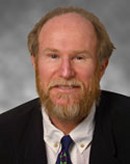|
||||||||||||||
|
Keynote
Lecture
Abstract: This talk overviews recent work in the
field of DNA-based autonomous biomolecular devices. We
particularly emphasize molecular assemblies and
molecular devices that are (i) self-assembled: that is
they assemble into DNA nanostructures in one stage
without explicit external control, (ii) programmable:
the tasks the molecular devices execute can be modified
without an entire redesign and (iii) autonomous: they
operate without external mediation (e.g. thermal
cycling). We describe recent experimental progress in
DNA-based autonomous biomolecular devices that achieve:
2D patterning, computation, amplified sensing, and
molecular nanoscale transport. These have taken the
technology from a state of intriguing possibilities into
demonstrated capabilities of quickly increasing scale,
and we describe a number of very promising applications
in the biomedical industry.
|
|
|||||||||||||
|
|
|
|
||||||||||||
| copyright - designed by WSEAS | ||||||||||||||
